GETTYSBURG, Pa. – The morning mist had given way to midday haze and humidity Sunday as a throng of more than 50 people gathered on a rocky hillside where, 150 years ago this Tuesday, about 350 Maine men changed history.
“This is a most unexpected battle,” Bill Hewitt, a ranger with the National Park Service, told the group gathered atop Little Round Top. “We have two forces moving as quickly as they can knowing whoever gets here first is going to control the battle.”
The 20th Maine Regiment’s exploits on that hot day in July 1863 are well known. It drove back repeated assaults from a larger Alabama force attempting an end run around the Union Army’s far-left flank — a maneuver that, if successful, might have changed the outcome of the pivotal Civil War battle.
But as the size of Hewitt’s tour group suggested, it’s a story that clearly still resonates.
Ken and Shelly Quinn made the trip from Lisbon Falls, Maine, with their three children — Eryn, Adrian and Sean — to help the family connect with history. Gettysburg is the focal point of a weeklong drive through history that will also take them to Philadelphia’s Independence Hall and to the monuments of Washington, D.C.
Ken Quinn said he became interested in Gettysburg fairly recently after reading about Col. Joshua Lawrence Chamberlain — the commander of the 20th Maine — and his daring bayonet charge that, as Hewitt put it, effectively “breaks the back of the Confederates” that day.
“I realized what a hero he was,” Quinn said of Chamberlain while standing near the site of the charge on Little Round Top.
Tens of thousands of tourists, historians and re-enactors will descend on Gettysburg this week to remember 150 years later. The Union victory in what was a little-known farming community marked the turning point in the Civil War but came at a huge cost for both armies, with an estimated 51,000 soldiers dead, wounded or missing.
Today, hundreds of stone monuments stand in silent tribute to the men and units that fought at locations throughout Gettysburg, most of which are maintained — or not — to allow today’s visitors to see what soldiers would have seen a century and a half ago, minus the smoke and carnage.
Some of those visiting Gettysburg on Sunday chose to relive Pickett’s Charge — the final frontal assault that left 5,000 Confederates dead or wounded in less than a hour — by marching across the mile-long stretch of open farm fields to where the Union guns were positioned.
Others chose to experience Gettysburg by rewaging the battle themselves.
About 45 minutes after Hewitt’s tour wrapped up, the thud of distant cannons could be heard from atop Big Round Top, another hill taken by Chamberlain and the 20th Maine.
Because re-enactments are not allowed on the battlefields themselves, thousands of re-enactors shouldering muskets and dressed in blue and gray woolen outfits gathered at a farm about four miles from downtown Gettysburg. It was one of two, large-scale re-enactments scheduled for this week by different, competing organizations.
Units from throughout New England — including several from Maine — participated in the massive skirmish as thousands more watched. Among them were about 20 members of the 3rd Vermont Volunteers, most of whom were camping out Civil War-style for the entire week.
“I wanted to experience what the 19th century soldier experienced on the field, and I got it in spades,” said Ed Miller, a Vermonter taking a break from the near 90-degree heat and humidity while sitting on the tailgate of a pickup truck.
While Miller has been a re-enactor for about five years, Henry Wakefield has been doing it for 47 years.
“It’s my way of paying tribute to those guys and all of the veterans who have served,” said Wakefield, who has eight ancestors who served in the Civil War.
It was a convergence of fate — and roads — that brought 97,000 Union soldiers and 75,000 Confederates together in Gettysburg in 1863.
The National Park Service does not have estimates of how many people will travel those same roads today — passing by simple stone farmhouses that likely look much like they did 150 years ago — to participate in the 150th anniversary observances. But more than 6 million people have passed through the doors of Gettysburg National Military Park’s visitors center since 2008.
Maine units participated in almost every major battle at Gettysburg, from Little Round Top to the Wheat Field, from the first major assault on the first day to Pickett’s fateful and final charge on the last. More than a dozen monuments to those Maine units are scattered across the military park, although the 20th Maine’s monuments on Little Round Top attract the most attention.
On Sunday, Mainers also seemed to be everywhere — whether as tourists, re-enactors or guest speakers.
Tom Desjardin, an author and former Gettysburg park curator who is now a historian at the Maine Bureau of Parks and Lands, told about 250 people about the “Joshua Chamberlain You Didn’t Know.”
Desjardin told about Chamberlain’s lifelong but little-known struggle with stuttering and about how, contrary to popular perception, life after the Civil War for Chamberlain was not easy. The four-term Maine governor struggled financially and suffered for 50 years until his death with extreme pain from a musket ball that passed through both of his hips.
“Chamberlain’s service didn’t end with that ‘happily ever after,’ ” Desjardin said.
As the day’s shadows lengthened, thousands gathered near the Soldiers’ National Cemetery where 3,500 soldiers are buried and where President Abraham Lincoln delivered the Gettysburg Address. In her keynote address, presidential author and Colby College alumna Doris Kearns Goodwin sought to link the struggle at Gettysburg with the wider battle over slavery and to the civil rights battles that followed and continue today.
“We can look upon these graves … knowing that each of these soldiers sent forth ripples of hope” that led to the end of slavery, she said.
Following the ceremony as night fell, visitors and invited guests paid one more tribute to Gettysburg’s fallen by marching to the military cemetery to light candles at each of the graves — including those marking the final resting places of 104 Maine men who arrived in Gettysburg 150 years ago this week and never left.
Kevin Miller can be contacted at 317-6256 or at:
kmiller@mainetoday.com
On Twitter: @KevinMillerDC
Send questions/comments to the editors.


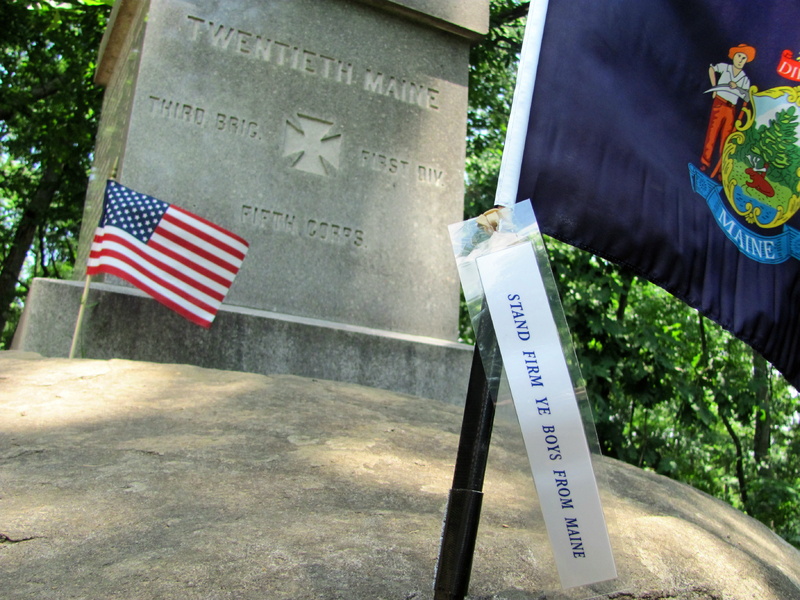
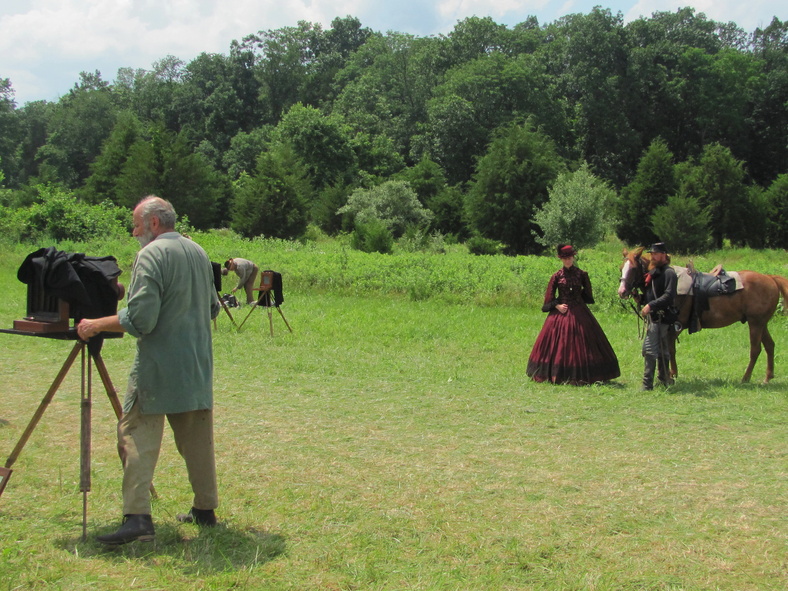
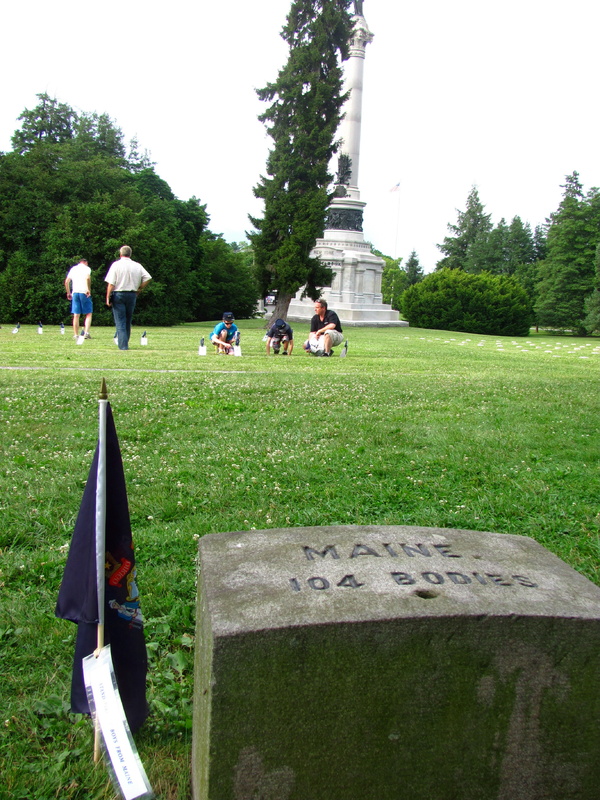
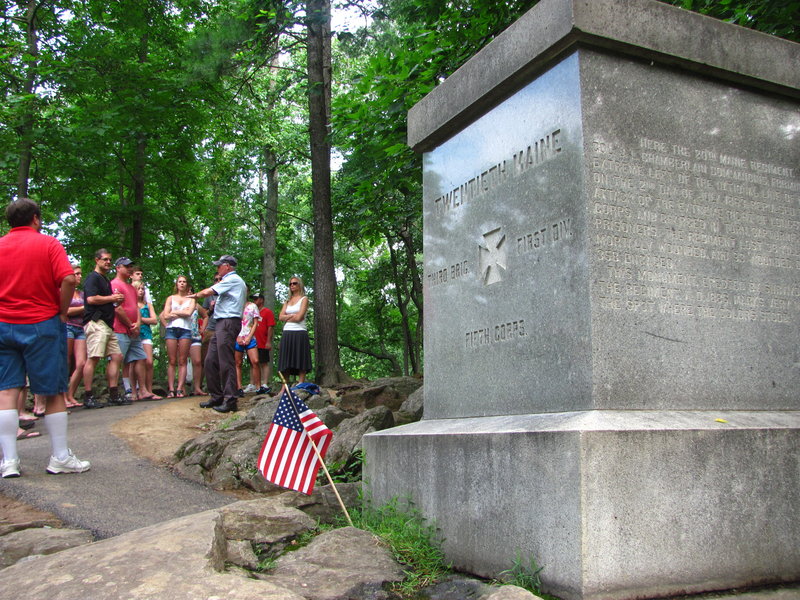
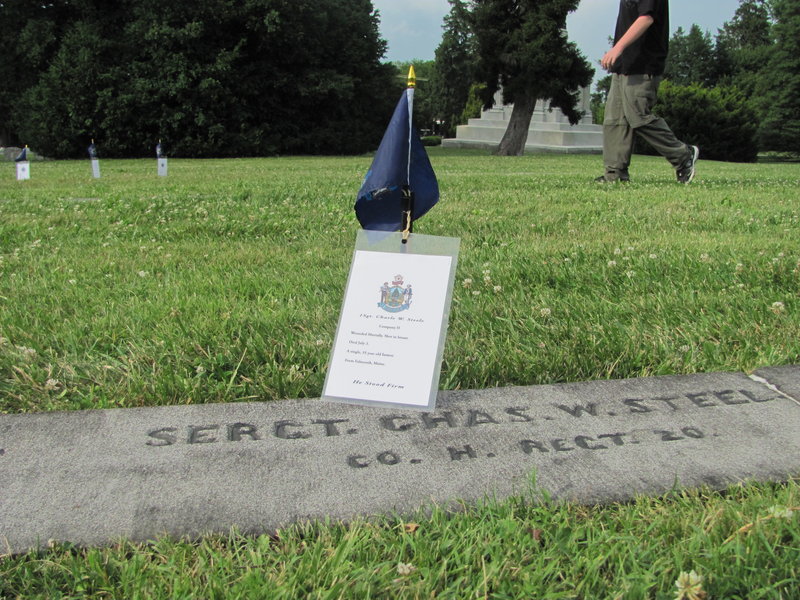

Success. Please wait for the page to reload. If the page does not reload within 5 seconds, please refresh the page.
Enter your email and password to access comments.
Hi, to comment on stories you must . This profile is in addition to your subscription and website login.
Already have a commenting profile? .
Invalid username/password.
Please check your email to confirm and complete your registration.
Only subscribers are eligible to post comments. Please subscribe or login first for digital access. Here’s why.
Use the form below to reset your password. When you've submitted your account email, we will send an email with a reset code.